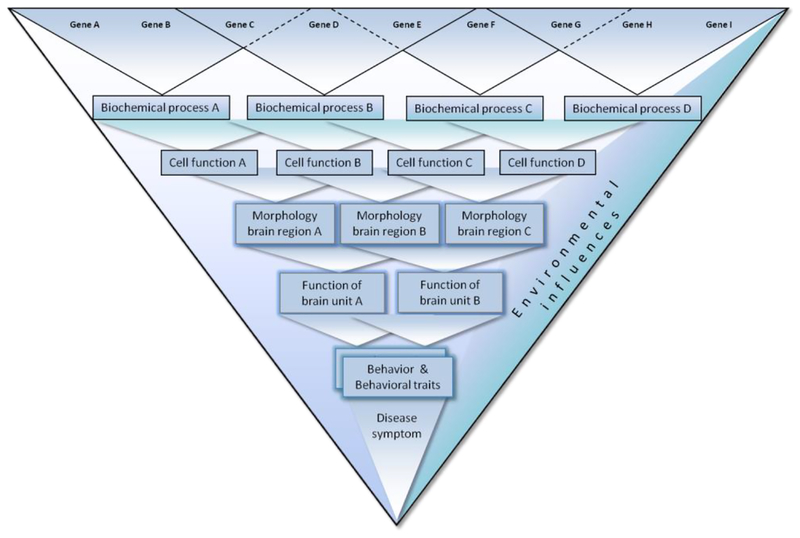Figure 2:
This schematic representation of the endophenotype concept shows the pathway from gene to disease at different levels of complexity in psychiatric genetics. The figure has been modified from a previous publication (Figure 1, (Franke et al., 2009)). Polygenicity (schematically depicted by gene A to I) is involved in causing disease symptoms. A reduced number of genes is involved in disease-related endophenotypes. These can be studied at various biological levels, e.g. biochemical processes and cell function can be assessed by biological assays in cell or animal models by measuring e.g. neuron morphology or synaptic functioning. Neuroimaging methods (structural and functional) can be applied to assess relevant endophenotypes at the level of brain morphology (‘Morphology brain region A-C’). Endophenotypes, related to the ‘function of brain units’, can be e.g. investigated by functional MRI or through performance measurements on neuropsychological tests. Aberrations at this level can result in altered behavior and disease-related behavioral traits, that subsequently lead to disease symptoms. Environmental influences can impact on all levels and need more attention in future studies. Bioinformatic pathway and network analyses can help to integrate data from various sources and to identify molecular networks or cellular processes in which ADHD-related genes are enriched.

